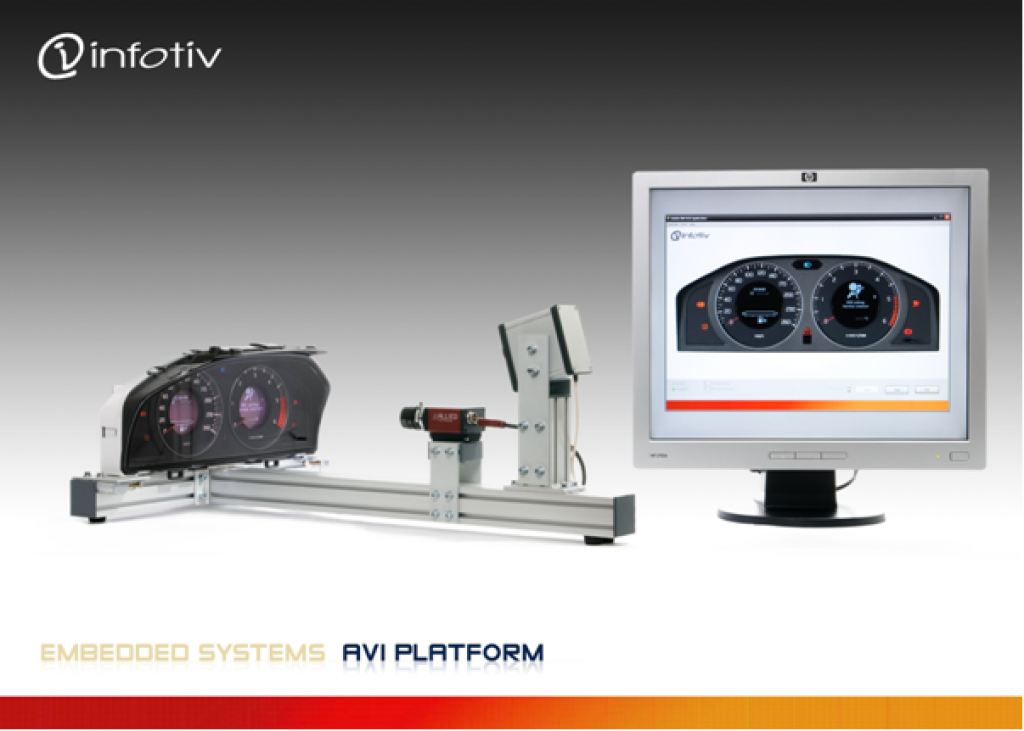We designed automated vision interpretation software (AVI) using LabVIEW and the NI Vision Development Module, which presented the most efficient and powerful capabilities for developing our automated vision interpretation concept and shortening our time market.
– Dan Olsson, Infotiv AB
The Challenge
Designing an automated test system to interpret text, symbols, and indicators to ensure high-quality human machine interface (HMI) products.
The Solution
Developing automated vision interpretation (AVI) software using LabVIEW and the NI Vision Development Module to create an automated vision system that reduces human errors in product verification improving product quality.
The Test System Implementation
To scan the displays, we use a general IEEE 1394 camera for image processing applications with an off-the-shelf USB camera to monitor the LED indicators. LabVIEW and NI Vision Development Module algorithms are used to process image data from the cameras before comparing it with a predefined pattern. We easily can use the output of this in other systems, or store them in a database. We designed the test system software to handle parallel threads to ensure real-time test execution. The system also can handle varying lighting conditions.
The image acquisition driver initiates and grabs images from any IEEE 1394 or USB camera, and we apply image enhancement methods to the image to assure the best possible image quality. The driver can be adapted to use multiple cameras and pipelined to maintain the speed of the image acquisition hardware. The NI Vision Development Module extracts the region of interest for each area to be monitored. We use vision algorithms to determine relevant and irrelevant image data. The relevant image data is also processed to ease the workload of the match pattern module. The match pattern algorithm converts image data into parameters that can be tested by comparing the image data propagated from the image manipulation module with predefined patterns representing all letters and icons that can be presented on the monitored LCD.
In addition, the application module is a unique software layer that controls the behaviour and data representation of the AVI system. We built the demonstration layer with a GUI that mimics the appearance of the device under test. We can integrate the main software module with any other application, such as NI TestStand, to complete the test and verification system.
The Next Step
System performance depends on the hardware equipment and the characteristics of the device under test. A typical time value to interpret one text or symbol is 100 ms and the analysis of the LED indicators is less than 1 ms. The resolution, which depends on optics, is 0.2 mm in the current setup when covering both LCDs on the test object. We can easily optimize the current system for other vision purposes such as for recognizing broken pixels in a LCD display or measuring system response time. Moreover, we can implement the simulation script that feeds the device under test in LabVIEW and execute it from the same PC as the AVI system, and thereby obtain a more compact system.
We successfully designed the AVI software using LabVIEW and the NI Vision Development Module to create an automated vision system that ensures a high-quality HMI for the user and reduces human error to save time and money.
For More Information
Infotiv AB
Peter Haglund, Manager of Test System Development
Västra Hamngatan 8
Sweden
SE – 411 17 Gothenburg
Tel: +46 31 339 39 00
E-mail: [email protected]
Author Information
Dan Olsson
Infotiv AB
Västra Hamngatan 8
Gothenburg SE – 411 17
Sweden


